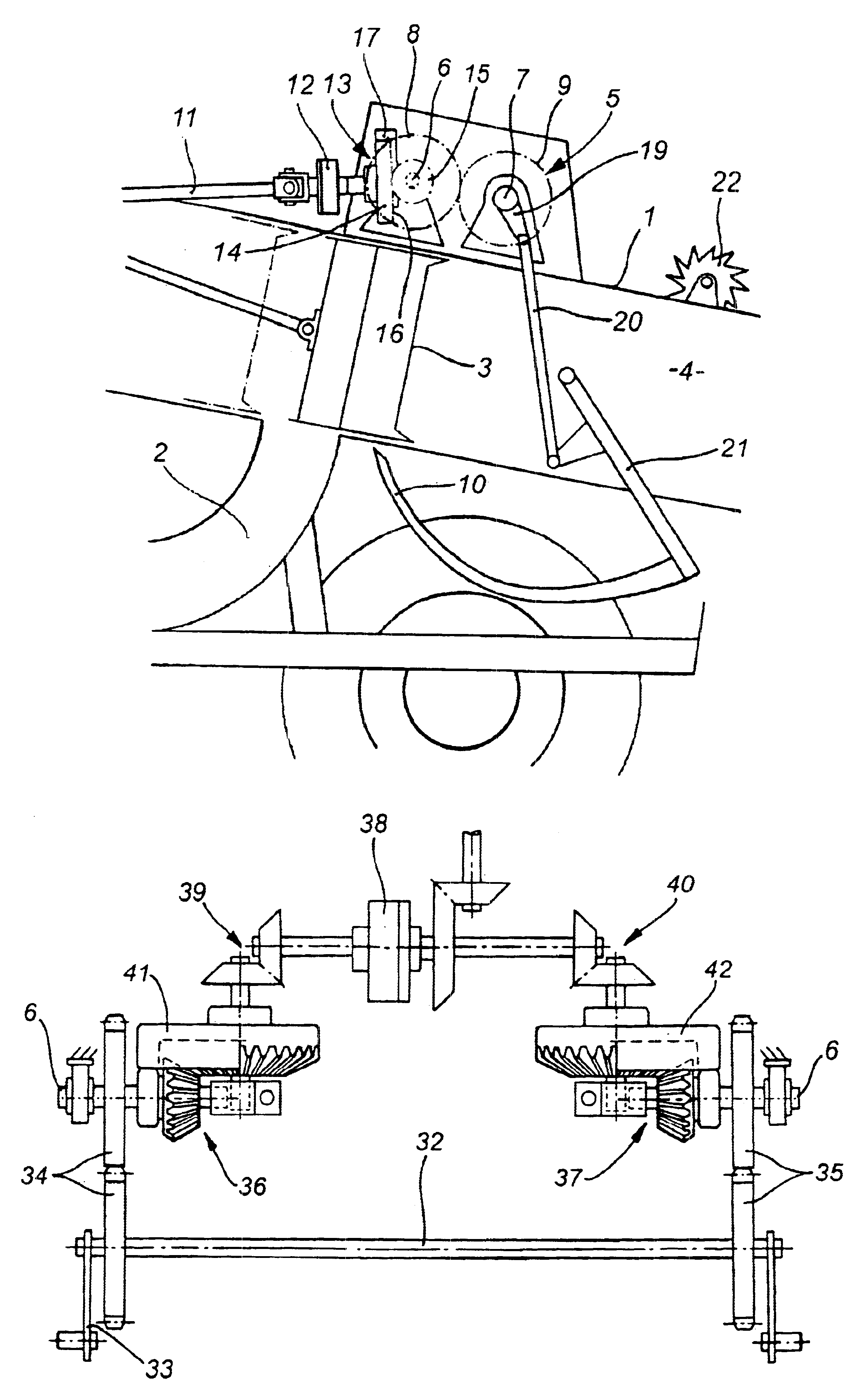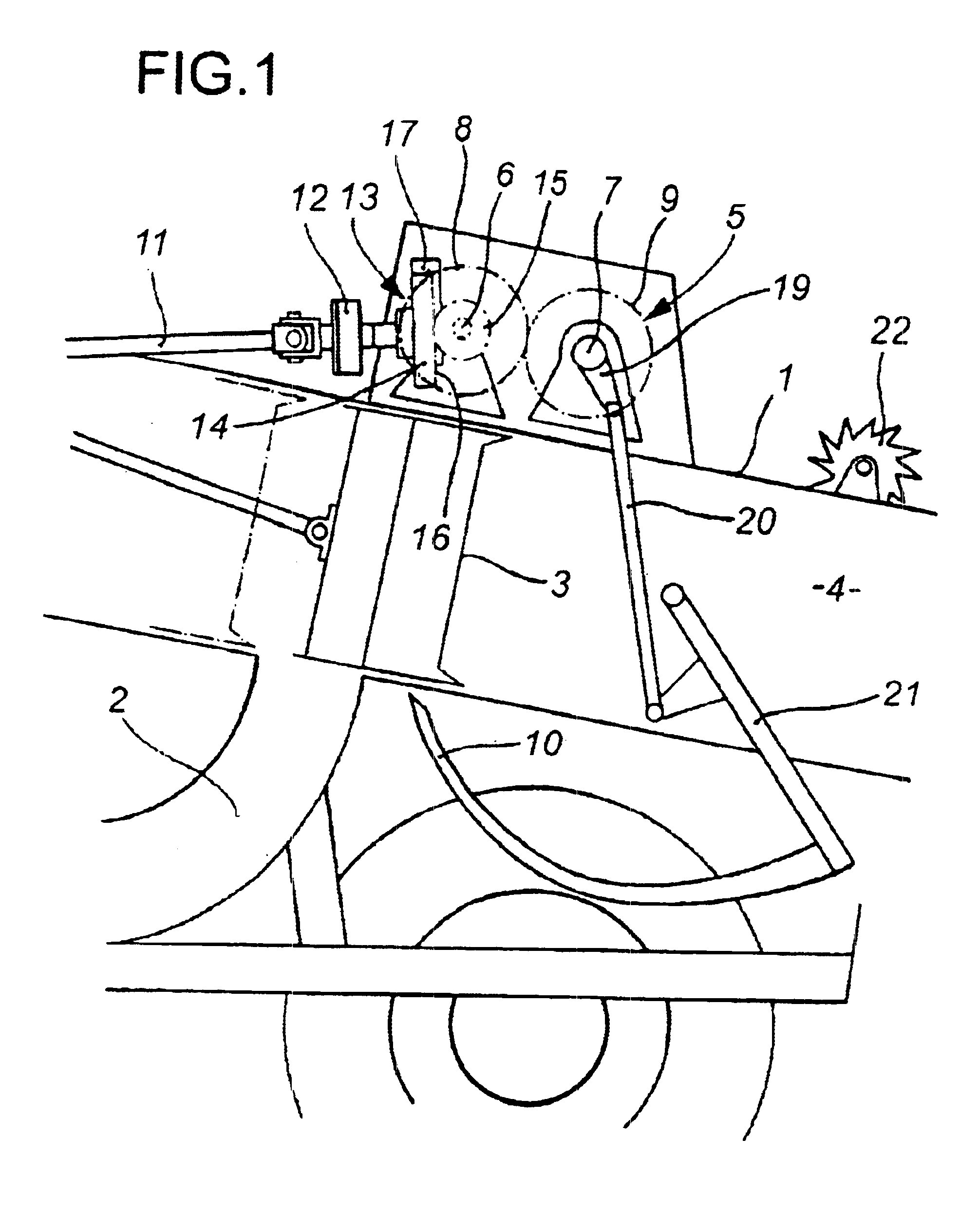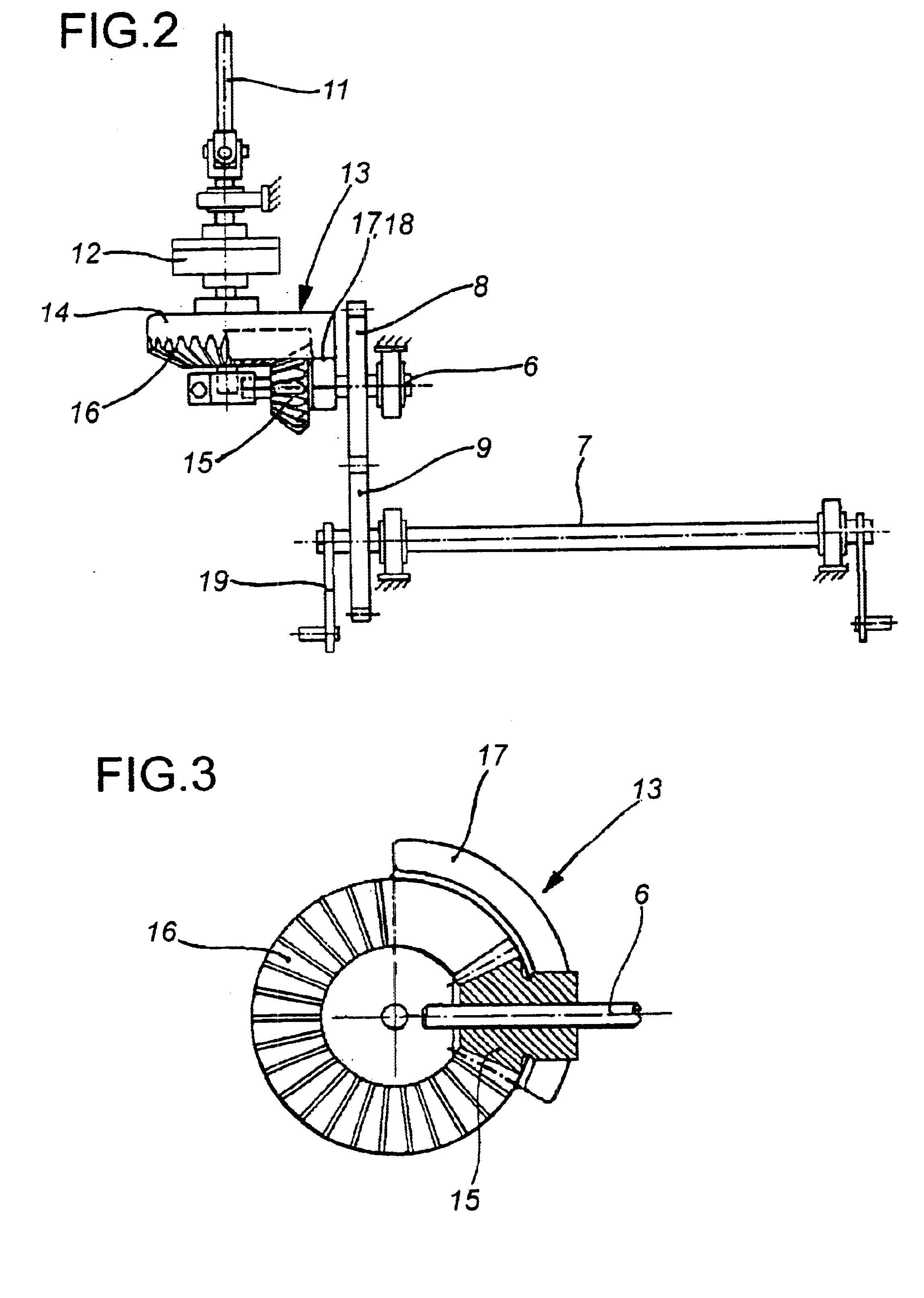Binding device for a big baler
a technology of a binding device and a baler, which is applied in the field of binding devices for balers, can solve the problems of twine loosening and the loss of the compressed density of the formed bale, and achieve the effect of simple means of controlling operation
- Summary
- Abstract
- Description
- Claims
- Application Information
AI Technical Summary
Benefits of technology
Problems solved by technology
Method used
Image
Examples
Embodiment Construction
A big baler 1, which is shown partially in FIG. 1, includes a delivery channel 2, a plunger 3, a baling channel 4, and a binding device 5. The baler 1 cooperates with a twine knotter (not shown) driven by a knotter shaft 7 that extends parallel to a connecting shaft 6 and is driven thereby. Respective spur gears 8, 9, which engage each other and have the same number of teeth, are fixedly secured on the connecting shaft 6 and the knotter shaft 7, respectively. The spur gears 8 and 9 provide for transmission of a rotational movement from the connecting shaft 6 to the knotter shaft 7. The knotter shaft 7 drives twine needles 10 and twine knotters (not shown) that cooperate with respective twine needles 10. The drive transmission is effected from a drive (not shown) by a drive shaft 11. The transmission ratio between the shaft 11 and the drive of the plunger 3 is 1:1. The drive shaft 11 is arranged perpendicular to the connecting shaft 6. A one-stop clutch 12 is mounted on the drive sha...
PUM
 Login to View More
Login to View More Abstract
Description
Claims
Application Information
 Login to View More
Login to View More - R&D
- Intellectual Property
- Life Sciences
- Materials
- Tech Scout
- Unparalleled Data Quality
- Higher Quality Content
- 60% Fewer Hallucinations
Browse by: Latest US Patents, China's latest patents, Technical Efficacy Thesaurus, Application Domain, Technology Topic, Popular Technical Reports.
© 2025 PatSnap. All rights reserved.Legal|Privacy policy|Modern Slavery Act Transparency Statement|Sitemap|About US| Contact US: help@patsnap.com



